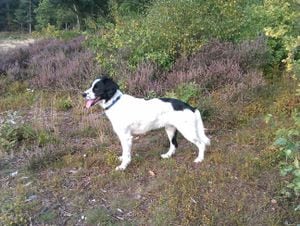Three dogs dead after outbreak of Alabama Rot on Cannock Chase
Three dogs have died after an outbreak of a rare disease called Alabama Rot.

Heartbroken dog owners are asking others to be vigilant amid the outbreak, as Staffordshire Police say three dogs have died.
Alabama Rot is a rare disease that causes damage to dogs' blood vessels and kidneys that is often fast-acting and fatal, but the cause of it is still unknown. A veterinarian practice, E C Straiton & Partners LT in Penkridge, has had one confirmed and one unconfirmed report of the disease.
Philip Richardson, 51, from Wimblebury, was heartbroken last week when he had to put down his healthy sprollie, a mix between a springer and a collie, called Jake.
He said: "Me and my family have had a horrendous and heart breaking experience of having to put my dog down.
"I feel incredibly angry about this disease not having a cure or antidote.
"Not a lot of people know about it and my boy and I have been running on the chase for 10 years and nothing has happened."




They tested his kidney which came back earlier this week (Tuesday) and confirmed it was the rare disease.
Now he is urging dog owners to take the simple steps to prevent the disease by washing their paws after a walk, not letting them drink dirty water and checking for initial symptoms such as lesions on the legs, chest and abdomen.
His wife and three children have cared for Jake since taking him on as a rescue dog.
It has not been confirmed whether it was contracted on Cannock Chase but Staffordshire Police is urging dog owners to be aware of the outbreak and avoid the area temporarily.
Spokeswoman Lydia Hooley said: "We are reminding residents with dogs who walk over Cannock chase, to be aware of Alabama Rot as it is in the area. Local veterinary practice (Straitons Penkridge) advise washing the dogs feet if they go in any muddy areas after their walks or short term avoiding the area."
This is similar to the advice given by the Forestry Commission at Cannock Chase which has asked people to look to advice given by veterinary specialists Anderson Moores.
They emphasised that cases have been reported from across different counties and that they are not currently advising dog owners to avoid any particular area.
Although an environmental cause for the disease is possible it has not been proven.





